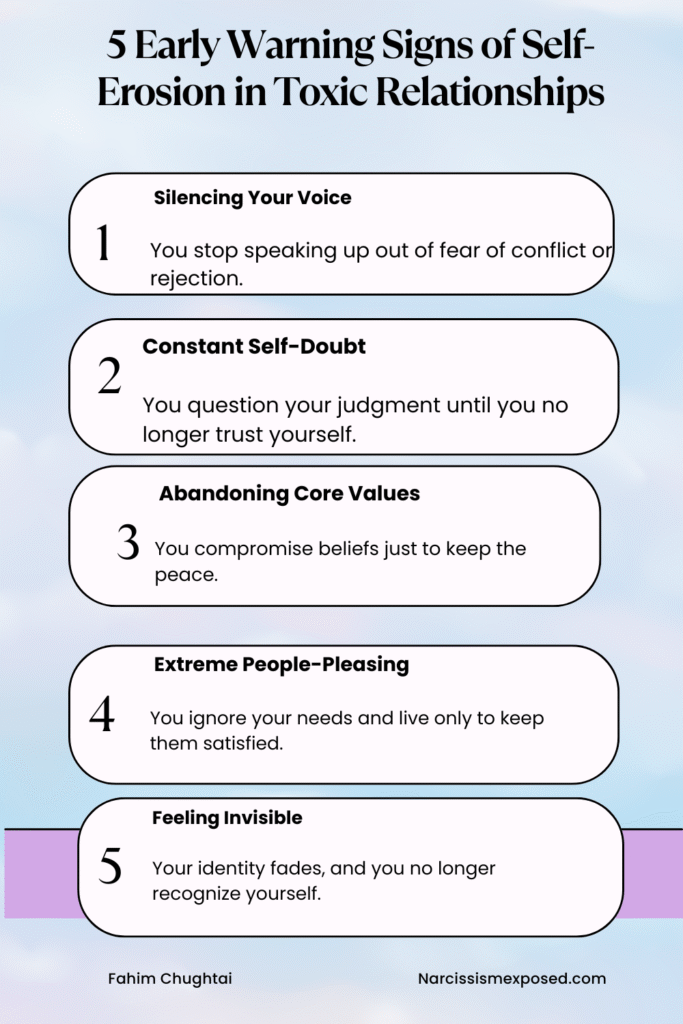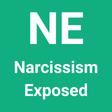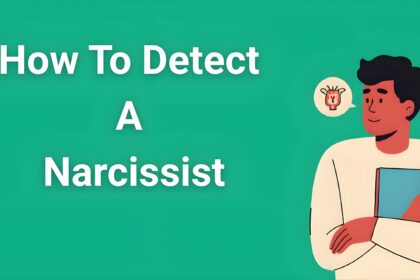Have you ever looked in the mirror and barely recognized the person staring back at you? Maybe you've caught yourself apologizing for things that once felt normal, or you've stopped wearing that bright yellow sweater your partner called “too attention-seeking.” These subtle changes might seem small, but they're often the first whispers of self erosion in toxic relationships.
- Self Erosion in Toxic Relationships: The Gradual Disappearance of You
- Early Warning Signs of Self Erosion in Toxic Relationships
- The Hidden Impact of Self Erosion in Toxic Relationships
- Common Patterns of Self Erosion in Toxic Relationships
- The Relationship Trauma You Can’t See
- Steps to Reclaim Your Identity After Self Erosion in Toxic Relationships
- Recovery from Self Erosion in Toxic Relationships
- Building a Stronger Future: Prevention and Protection Strategies
- Last words
Like water gradually wearing away at a shoreline, toxic relationship patterns can slowly chip away at your sense of self. You might not notice it happening at first – perhaps you're just being “more considerate” or “growing as a person.” But these relationship red flags often mask a deeper pattern of emotional abuse, where your personal identity starts fading like a photograph left too long in the sun.
In this guide, you'll discover the hidden signs of psychological manipulation that contribute to self-identity loss. Whether you're questioning your current relationship or supporting someone who might be experiencing codependency signs, we'll explore:
- The early warning signals that most people miss
- How relationship trauma sneaks into your daily life
- The subtle ways emotional boundaries get crossed
- Why self-worth in relationships gradually diminishes
- Practical steps to recognize and heal from toxic relationship patterns
From feeling like you're walking on eggshells to doubting your own judgment, you'll learn how to identify these patterns before they become deeply ingrained. Because understanding self erosion in toxic relationships isn't just about recognizing the problem – it's about reclaiming the person you were always meant to be.
Ready to uncover the truth about what's really happening in your relationship? Let's explore how to spot these patterns and, more importantly, how to protect your sense of self from eroding any further.
Self Erosion in Toxic Relationships: The Gradual Disappearance of You
Think of self erosion in toxic relationships like a favorite sweater that's been washed too many times. At first, the changes are so subtle you barely notice – the color fades slightly, the fabric feels a bit thinner. But over time, that once-vibrant piece of clothing becomes a shadow of what it used to be. This is exactly how toxic relationship patterns chip away at your identity.
What Really Happens When Your Self-Identity Erodes?
Self erosion in toxic relationships isn't just about feeling sad or upset – it's a deep, transformative process where you gradually lose touch with who you are. Imagine your personality, beliefs, and desires as pieces of a puzzle.
In a healthy relationship, these pieces fit together perfectly while maintaining their unique shapes. But when psychological manipulation takes hold, these pieces start to reshape themselves to fit someone else's puzzle.
You might experience this through:
- Second-guessing your everyday decisions (“Maybe I shouldn't go out with friends tonight…”)
- Changing your appearance or behavior to avoid criticism
- Doubting your own memories and experiences
- Diminishing your achievements to keep the peace
Why It's So Hard to Spot the Signs of Relationship Trauma
The tricky part about self-identity loss is that it often masquerades as love or compromise. When you're in the thick of emotional abuse patterns, these changes can feel like natural relationship adjustments. You might tell yourself:
“I'm just becoming more considerate” “Relationships require sacrifice” “Maybe I was too selfish before” “They just want what's best for me”
These thoughts are common signs of codependency, where the line between healthy compromise and self-erosion becomes dangerously blurred.
The Daily Reality of Living with Self-Worth Erosion
Think about these everyday scenarios that might feel painfully familiar:
- Checking your phone multiple times to make sure your messages won't upset your partner
- Carefully planning your words before sharing even simple opinions
- Feeling relieved when plans get canceled because you won't have to navigate social situations
- Losing interest in hobbies that once brought you joy
These aren't just relationship red flags – they're signs that your emotional boundaries are being systematically worn down in a toxic relationship dynamic.
How Self Erosion Sneaks Into Your Daily Life
The process of self erosion in toxic relationships is particularly dangerous because it happens in such small increments. Like a frog in slowly heating water, you might not realize the danger until you're already deeply affected. This gradual identity erosion in relationships can manifest as:
- Changing your personal style to avoid conflict
- Distancing yourself from supportive friends and family
- Adopting your partner's opinions as your own
- Losing confidence in your decision-making abilities
Understanding these patterns is the first step toward recognizing toxic relationship behaviors and beginning the journey of reclaiming your authentic self.
Early Warning Signs of Self Erosion in Toxic Relationships

When it comes to recognizing self erosion in toxic relationships, the earliest signs often feel like small, insignificant changes. Yet these subtle shifts can be the first indicators of deeper relationship trauma developing beneath the surface. Let's explore these warning signals that might indicate you're experiencing toxic relationship patterns.
Daily Habits and Routines: The First Signs of Change
Your everyday routine can be the first place where signs of emotional abuse patterns begin to show:
- You've stopped your morning workout routine because your partner makes comments about “wasting time at the gym”
- Your meal choices have changed to avoid criticism about your eating habits
- You're constantly checking your phone, feeling anxious about delayed responses
- Your sleep schedule has shifted to accommodate your partner's preferences, even if it affects your work performance
Social Connections: When Your World Starts Shrinking
One of the most telling signs of self-identity loss in relationships is how your social circle changes:
- You find yourself making excuses not to meet friends who've known you the longest
- Group activities that once brought joy now cause anxiety
- You're hesitant to share relationship details with family members
- Social plans increasingly require your partner's approval
- You've lost touch with people who used to be central to your life
Decision-Making: When Confidence Becomes Uncertainty
Notice how psychological manipulation can affect your ability to make choices:
- You second-guess simple decisions like what to wear or eat
- Major life choices now revolve around your partner's preferences
- You seek constant approval before making any decisions
- Your career goals have taken a backseat to relationship demands
- Financial decisions require excessive justification
Personal Values and Beliefs: The Deeper Impact
Perhaps the most concerning aspect of self erosion in toxic relationships is how it affects your core values:
- Religious or spiritual beliefs may shift to match your partner's
- Political views suddenly align perfectly with theirs
- Your moral compass feels less certain than before
- Personal boundaries become increasingly flexible
- Life goals and ambitions start to feel less important
The Hidden Cost of Codependency Signs
These changes often manifest alongside developing codependency patterns:
- You feel responsible for your partner's emotional state
- Your mood depends entirely on their happiness
- You've developed an intense fear of abandonment
- Personal opinions take a backseat to keeping peace
- Your self-worth becomes tied to their approval
Recognizing Relationship Red Flags
Pay attention to these additional warning signs of toxic relationship behaviors:
- You're walking on eggshells to avoid conflict
- Gaslighting makes you question your reality
- Your accomplishments are frequently minimized
- Personal boundaries are consistently violated
- You're often made to feel guilty for having needs
The Hidden Impact of Self Erosion in Toxic Relationships
Living with self erosion in toxic relationships creates deep psychological changes that often go unnoticed until they become severe:
- Anxiety and Depression Patterns
- Constant worry about partner's reactions
- Unexplained sadness that feels “normal” now
- Racing thoughts about relationship scenarios
- Difficulty experiencing joy in once-loved activities
- Self-doubt becoming your daily companion
- Emotional Abuse Impact
- Frequent mood swings that weren't present before
- Emotional numbness as a coping mechanism
- Difficulty trusting your own judgment
- Increased self-criticism and negative self-talk
- Persistent feelings of guilt and shame
Physical Signs of Relationship Trauma
The body often signals distress from toxic relationship patterns before the mind acknowledges it:
- Sleep Disturbances
- Insomnia or excessive sleeping
- Nightmares about relationship situations
- Constant fatigue despite adequate rest
- Disrupted sleep patterns due to anxiety
- Physical Health Changes
- Unexplained headaches or migraines
- Digestive issues and appetite changes
- Weakened immune system
- Muscle tension and chronic pain
- Skin problems or accelerated aging
Social Impact of Self-Identity Loss
Psychological manipulation in relationships often leads to significant social changes:
- Relationship Dynamics
- Isolation from supportive friends and family
- Loss of independent social connections
- Difficulty maintaining new friendships
- Reduced social confidence and skills
- Fear of social situations without partner present
- Support System Erosion
- Weakened family bonds
- Lost connections with longtime friends
- Reduced community involvement
- Limited access to emotional support
- Increased dependency on partner
Professional Consequences of Toxic Relationships
Self erosion in toxic relationships can significantly impact your career trajectory:
- Workplace Performance
- Decreased concentration and productivity
- Missing deadlines due to relationship stress
- Difficulty participating in team projects
- Reduced creativity and innovation
- Overlooked promotional opportunities
- Career Development Impact
- Passing up advancement opportunities
- Reluctance to attend networking events
- Limited professional growth
- Decreased salary potential
- Compromised work relationships
The Cycle of Codependency Signs
Understanding how these impacts create a self-perpetuating cycle:
- Emotional Boundaries Dissolution
- Increasing difficulty saying “no”
- Blurred lines between your needs and partner's demands
- Lost sense of personal space
- Compromised decision-making ability
- Long-term Effects
- Chronic stress response activation
- Development of trauma bonds
- Normalized toxic relationship behaviors
- Increased vulnerability to future emotional abuse patterns
Common Patterns of Self Erosion in Toxic Relationships
Let's see common patterns of self erosion:
When Boundaries Start to Fade
Think of personal boundaries as the invisible lines that define who you are. In cases of self erosion in toxic relationships, these lines don't vanish suddenly – they blur gradually, like footprints washing away in the tide.
You might find yourself sharing your phone password because “couples shouldn't have secrets,” or canceling plans with friends because “keeping your partner happy is more important.” These small concessions seem harmless at first, but they're often the first signs of emotional abuse patterns taking root.
Your Voice Changes Before You Notice
Communication shifts are subtle yet profound indicators of toxic relationship patterns. Remember when you used to speak your mind freely? Now you might catch yourself rehearsing simple conversations in your head, carefully choosing words to avoid potential conflicts.
Where you once stated opinions confidently, you now start sentences with “I might be wrong, but…” or “Maybe I'm just being sensitive…” This transformation in how you express yourself isn't just about keeping the peace – it's a sign of deepening psychological manipulation.
Watching Your Passions Fade Away
One of the most heartbreaking aspects of self erosion in toxic relationships is the gradual abandonment of personal interests. That painting class you loved? Somehow it became “selfish” to spend time on it.
Your weekly running group? It started feeling easier to skip it than deal with your partner's mood afterward. These aren't just hobbies you're losing – they're pieces of your identity being traded for temporary relationship harmony.
Looking in the Mirror: Who Are You Now?
Perhaps the most profound change comes in how you see yourself. Self-identity loss creeps in quietly. You might notice you're dressing differently, not because your style evolved naturally, but because you're avoiding criticism.
Your opinions start to mirror your partner's, not from genuine agreement, but because it's easier than defending your own views. This shifting self-perception goes beyond simple compromise – it's a fundamental rewiring of how you view your worth and place in the world.
The Relationship Trauma You Can't See
The impact of these changes runs deep, creating invisible scars that affect how you interact with the world. Your gut instincts, once sharp and reliable, become muffled under layers of self-doubt. You might find yourself experiencing codependency signs, where your sense of self becomes so intertwined with your partner's approval that you can barely remember who you were before the relationship began.
Steps to Reclaim Your Identity After Self Erosion in Toxic Relationships
These steps can help you to reclaim your identiy:
Immediate Steps: Creating Space for Healing
When you're ready to break free from toxic relationship patterns, start with small but powerful actions. Begin by carving out moments just for yourself – maybe it's a 15-minute morning ritual or a quiet evening walk. These seemingly simple acts of self-care are actually profound steps in rebuilding emotional boundaries. Start journaling about your experiences, not just to document the relationship trauma, but to rediscover your own voice and thoughts.
Building Your Recovery Foundation
Recovery from self erosion in toxic relationships requires a strategic approach. Think of it as rebuilding your house – you need a solid foundation before adding walls and windows. Start reconnecting with activities that once brought you joy, even if they feel unfamiliar now. Maybe you loved painting, reading, or hiking – return to these passions gradually, without pressure to feel the same joy immediately. This isn't just about hobbies; it's about reclaiming pieces of your identity that psychological manipulation made you question.
Creating Your Circle of Support
Breaking free from codependency signs doesn't mean doing it alone. Reach out to one trusted friend or family member – someone who knew you before the toxic relationship began. They can help remind you of who you were and validate your experiences. Consider joining support groups where others understand the impact of emotional abuse patterns. These connections provide more than just emotional support; they offer practical insights from those who've walked similar paths.
Professional Support: Your Recovery Toolkit
Working with professionals who understand self erosion in toxic relationships can accelerate your healing journey. A trauma-informed therapist can help you:
- Process your experiences without judgment
- Develop healthy coping mechanisms
- Rebuild trust in your own judgment
- Create stronger personal boundaries
- Navigate the complex emotions of recovery
Recovery from Self Erosion in Toxic Relationships
Now hoe to recover from self erosion in toxic relationships:
Understanding Your Healing Timeline
Recovery from self erosion in toxic relationships isn't a sprint – it's more like learning to dance. Some days you'll move forward gracefully; others, you might feel like you're stepping backward. Most survivors find their first significant shifts in perspective around 3-6 months after beginning active healing work. However, deeper healing from relationship trauma often unfolds over 1-2 years, with each person's journey uniquely their own.
Navigating Common Healing Challenges
The path through psychological manipulation recovery often involves facing uncomfortable truths. You might experience waves of grief for the time lost, or feel angry at yourself for “allowing” the emotional abuse patterns to continue. These feelings aren't signs of weakness – they're natural parts of healing. You might also encounter resistance from people who don't understand your journey, or face moments where old codependency signs try to resurface.
Recognizing Success in Your Recovery
Healing progress often shows up in subtle ways. You might notice you're making decisions without second-guessing yourself, or speaking your mind without first rehearsing your words. Small victories, like enjoying a hobby without guilt or setting a boundary without anxiety, are powerful indicators that you're reclaiming your identity after toxic relationship patterns.
Building a Stronger Future: Prevention and Protection Strategies
So, how you can prevent identiy erosion in futre:
Creating Healthy Relationship Foundations
Understanding self erosion in toxic relationships helps you build stronger connections in the future. Healthy relationships thrive on:
- Open, honest communication without fear
- Mutual respect for individual growth
- Support for personal interests and goals
- Shared responsibility for emotional well-being
- Recognition of separate identities within the partnership
Mastering the Art of Boundaries
Think of boundaries as your personal constitution – they define your rights and protect your well-being. Start with small, clear statements about your needs. Practice saying “no” without explanation when something doesn't feel right. Remember: healthy boundaries aren't walls; they're bridges that help you connect authentically while maintaining your sense of self.
Spotting Red Flags Early
Your experience with relationship trauma has given you valuable insight. Trust your instincts when you notice:
- Someone rushing emotional intimacy
- Subtle attempts to control your choices
- Dismissal of your feelings or experiences
- Pressure to abandon personal interests
- Isolation from support systems
Self-Preservation: Your Ongoing Protection
Maintaining your recovered sense of self requires ongoing attention. Develop daily practices that reinforce your independence and strength:
- Regular check-ins with yourself about your feelings and needs
- Maintenance of separate interests and friendships
- Financial independence
- Strong support network
- Clear personal values and goals
Remember: Healing from self erosion in toxic relationships is both an ending and a beginning. While you're closing the chapter on past hurt, you're also writing a new story – one where you're the author of your own experience.
Last words
Throughout this exploration of self erosion in toxic relationships, we've uncovered how subtle changes can lead to profound identity loss. From recognizing early warning signs to understanding the deep impact of psychological manipulation, you've gained valuable insights into your experience. Remember: your journey through relationship trauma isn't just about healing – it's about rediscovering your strength and rebuilding your sense of self.
Taking Your First Steps Today
The path to recovery from toxic relationship patterns starts with small but significant actions you can take right now:
- Write down three things that used to bring you joy before the relationship
- Reach out to one trusted friend or family member
- Schedule a consultation with a trauma-informed therapist
- Start a simple journal to track your feelings and experiences
Hope for Your Future
Healing from emotional abuse patterns doesn't mean you'll never love or trust again. Instead, this experience has equipped you with deeper wisdom and stronger emotional boundaries. Many survivors of self erosion in toxic relationships go on to build healthy, fulfilling partnerships – ones where their authentic selves are celebrated, not diminished.



